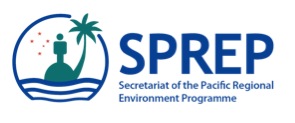Throughout August, countries in the Pacific region, with support from the Secretariat of the Pacific Regional Environment Progamme (SPREP), have been taking preventative and corrective action to stop the spread of invasive alien species (IAS).
By the end of 2015, SPREP expects to exceed its Strategic Plan 2010-2015 goal of creating five National Invasive Species Strategy and Action Plans (NISSAPs) for Pacific island countries and territories by 100%.
 September 2015: Throughout August, countries in the Pacific region, with support from the Secretariat of the Pacific Regional Environment Progamme (SPREP), have been taking preventative and corrective action to stop the spread of invasive alien species (IAS). By the end of 2015, SPREP expects to exceed its Strategic Plan 2010-2015 goal of creating five National Invasive Species Strategy and Action Plans (NISSAPs) for Pacific island countries and territories by 100%.
September 2015: Throughout August, countries in the Pacific region, with support from the Secretariat of the Pacific Regional Environment Progamme (SPREP), have been taking preventative and corrective action to stop the spread of invasive alien species (IAS). By the end of 2015, SPREP expects to exceed its Strategic Plan 2010-2015 goal of creating five National Invasive Species Strategy and Action Plans (NISSAPs) for Pacific island countries and territories by 100%.
SPREP’s Invasive Species Advisor, David Moverley, stressed that this progress means the Pacific is “one step closer to coordinated efforts to address invasive species, which…can cripple economies in our region as well as have social and health impacts upon our communities.”
SPREP’s efforts to address invasive species in the Pacific includes helping countries to identify priority invasive species that are not currently present in countries, but are at risk of being introduced from neighbors through air travel or shipping. In the Marshall Islands and the Federated States of Micronesia (FSM), for example, such species include the brown tree snake, coconut rhinoceros beetle, little fire ant and red-vented bulbul, which are present in either Hawaii or Guam.
SPREP hosted workshops to support the Marshall Islands and FSM to finalize their NISSAPs from 7-26 August. During the workshops, the countries agreed on priority species and areas for inclusion in the plans, identified pathways of introduction and determined responsibilities for implementing the NISSAPs.
At a SPREP workshop in Tuvalu, participants recognized how ballast water can act as a pathway for introducing invasive species. Participants discussed Tuvalu’s obligations as a signatory to the Ballast Water Convention, such as the development of legislation and policies to address ballast water, and recognized the importance of developing harmonized guidelines and procedures to manage ballast water throughout the Pacific.
The workshop also resulted in the formation of the Tuvalu Invasive Species Committee, which includes representatives from government agencies, the private sector, civil society and local communities and will be coordinated by Tuvalu’s Environment Department. The workshop convened from 5-7 August and is part of work funded through the Convention for the Protection of Natural Resources and Environment of the South Pacific Region (the Noumea Convention).
Participants from Kiribati, the Marshall Islands, Tonga and Wallis and Futuna learned how to eradicate rats from small islands and atolls in the Pacific during a seven-day SPREP practical training workshop in Tonga. Rats reduce biodiversity, ecosystem resilience and food security and affect human health, according to SPREP. The workshop provided participants with the skills to implement rodent eradication using hand-held and bait-station application methods for small islands less than 10 hectares. Participants gained experience in rat eradication techniques by treating the islands of Malinoa and Motutapu in the Tongatapu group for rats.
In addition, Samoa’s Ministry of Natural Resources and Environment is removing a fast-growing invasive shrub species known as False Kava, which forms large thickets and a dense canopy and threatens native forests and plants. Samoa is working to remove this and other invasive species and replace them with native tree species through a project supported by SPREP, the UN Environment Programme (UNEP) and the Global Environment Facility (GEF) as part of a long-term restoration project and plan that includes ongoing monitoring and removal.
The SPREP/UNEP GEF Pacific Alliance for Sustainability (GEF-PAS) ‘Prevention, eradication and control of invasive alien species in the Pacific islands’ project provided support for the formation of the NISSAPs, the rat eradication training in Tonga and the removal of False Kava in Samoa. [SPREP Press Release 28 August] [SPREP Press Release 21 August] [SPREP Press Release 17 August] [SPREP Press Release 13 August] [Noumea Convention Website]